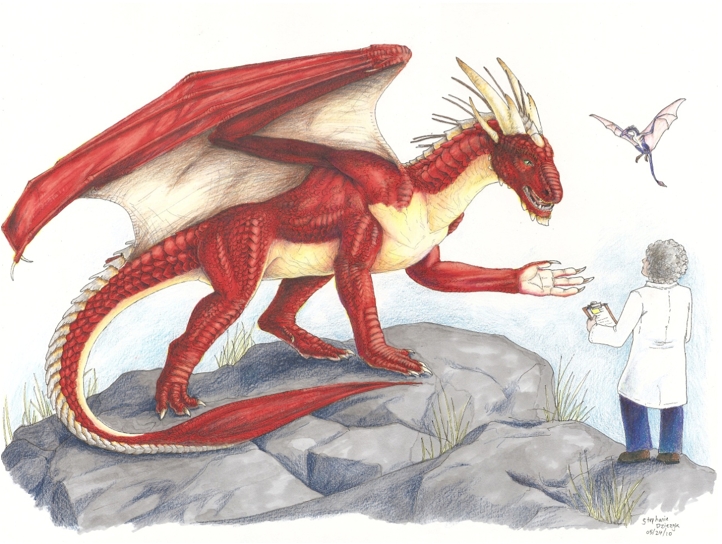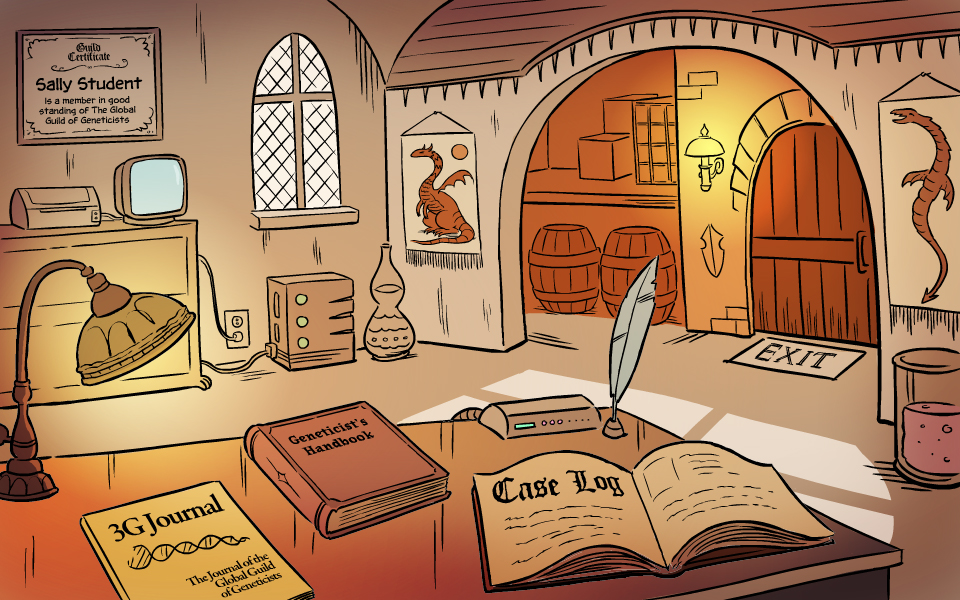Gaming in School: Digital Dragons Teach Students Genetics
Learn more about the drake games by watching this video.
Ever watched a teenager play a video game? The trance-like concentration; the long, frustrating hours spent puzzling over the same level; and the determination to sit in the same spot all day, without eating or sleeping — whatever it takes to win.
If you watch long enough, you'll see that the teen isn't just playing the game anymore but has become a part of the game. Captivated by the story, the players insert themselves into the game and live vicariously through the characters — saving villagers, fighting invading aliens and slaying evil dragons.
Science educators are now taking advantage of this "gaming effect" to teach biology in high schools. With the aid of Web-based programs that use dragons, high school students are learning about complex concepts and gaining an appreciation for how science is really done — all while having fun.
And guess what? The dragons get to be the good guys for once.
A dragon of a game
Of all the creatures scientists use to study biology, why pick dragons? Scientist-developers of the game were most familiar with the mouse genome but knew it was too complicated for students to work with. So they tossed out 99 percent of the genetic information and used the remainder to create a simpler model organism called a drake.
Get the world’s most fascinating discoveries delivered straight to your inbox.
In the game, drakes are used to help figure out the diseases of dragons in a way that's similar to how scientists use mice to understand human genetic diseases. The drakes weigh about 50 grams and breed four times each year, always producing a brood of 20. As with many games, the goal for players is to advance to the next level. To advance to the next level players have to solve the genetic problems plaguing the drakes.
One of the games, GenetIF, is the work of Randy Smith, director of educational programs and educational coordinator at a National Institutes of Health funded systems biology center at the Jackson Laboratoryin Maine. In this interactive and fictional game, played mostly in specialized or magnet high schools, students work at a drake research facility. They have three biological challenges to solve: identifying eye color (which is based on human blood types), scale color (which is modeled after mouse coat color) and disease genes (which are modeled after a metabolic condition called PKU). To study up, the students must visit the drake library.
"The game is based on real biology with a narrative thread that interests and excites students in science," said Smith, adding that the tools the students use in the game are the same ones used by actual researchers..
Going for the gold
Geniverse, a collaborative project led by the Concord Consortium and directed by Frieda Reichsman, tests the usefulness of this dragon theme to teach genetics in ordinary classroom environments. Funded by the National Science Foundation, the Geniverse storyline follows a similar concept as GenetIF but uses more traditional gaming techniques. In this game, students begin as trainees in a "Drake Breeder's Guild" and must solve genetic challenges to work their way up to becoming masters. They're also on a quest to breed the legendary "gold drake," a species that hasn't been seen for centuries.
As the game levels advance, the players' genetic mastery does as well. At each level, students are presented with the 20-drake brood and must use concepts from genetics to either predict traits or trace them back to the parents. In the beginning, the students learn about dominant and recessive genes in a hands-on way by changing one gene allele and then observing the physical effect, such as a lack of horns. Later, complex phenomena like incomplete dominance, where more than one allele is physically expressed, come into play. The master level focuses on the four genes involved in drake scale color (also based on real-life mouse coat color) that may lead to the fabled gold beast.
Biology of dragons
For future versions of the games, some players (and even scientists) have suggested giving dragons back their fire-breath. But, staying true to the premise of the game, Smith asks:"What's the real underlying biological trait?"
Sharing findings and backing them up with evidence are important components of both games. The students' colleagues (read classmates) can then support or refute the claims. This encourages reading, writing and recordkeeping skills, which Smith said teachers stressed the need for.
Using these programs to teach genetics and the scientific process seems like both a novel and obvious concept. Science is more than numbers and formulas — it's about exploration and learning. It can be hard to conceptualize science, Smith said, because science classes are typically a scrubbed history of who discovered what and when. The games, which are like a virtual lab, make it easier for students to grasp scientific concepts and ideas.
Reichsman said that changing the context of science from didactic to interactive relieves the academic pressure some students feel to just get the right answer, and, in doing so, frees them to learn instead of memorize. The same is true for students who may not be so thrilled by the thought of science — or of school, for that matter.
One teacher credited the games for some students' academic improvement and told Reichsman: "Three of my top kids in the class right now were kids [who] had pretty much been failing. They were understanding this [game] and coming up with explanations."
The students, who described themselves as gamers — not geeks — said the game gave them something to work with. Now, thanks to programs like GenetIF and Geniverse, they may one day call themselves scientists.
Learn more:
This Inside Life Science article was provided to LiveScience in cooperation with the National Institute of General Medical Sciences, part of the National Institutes of Health.



